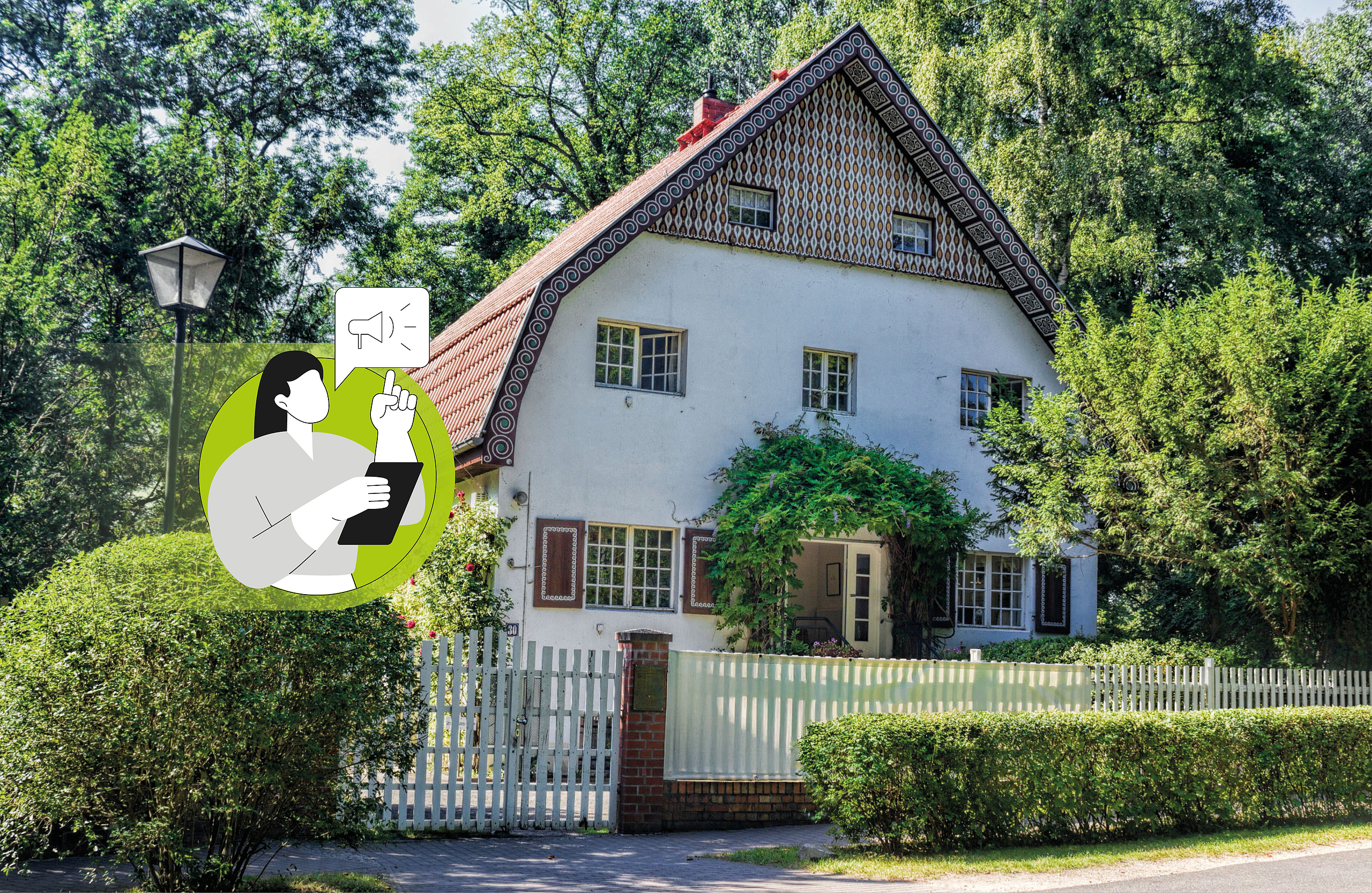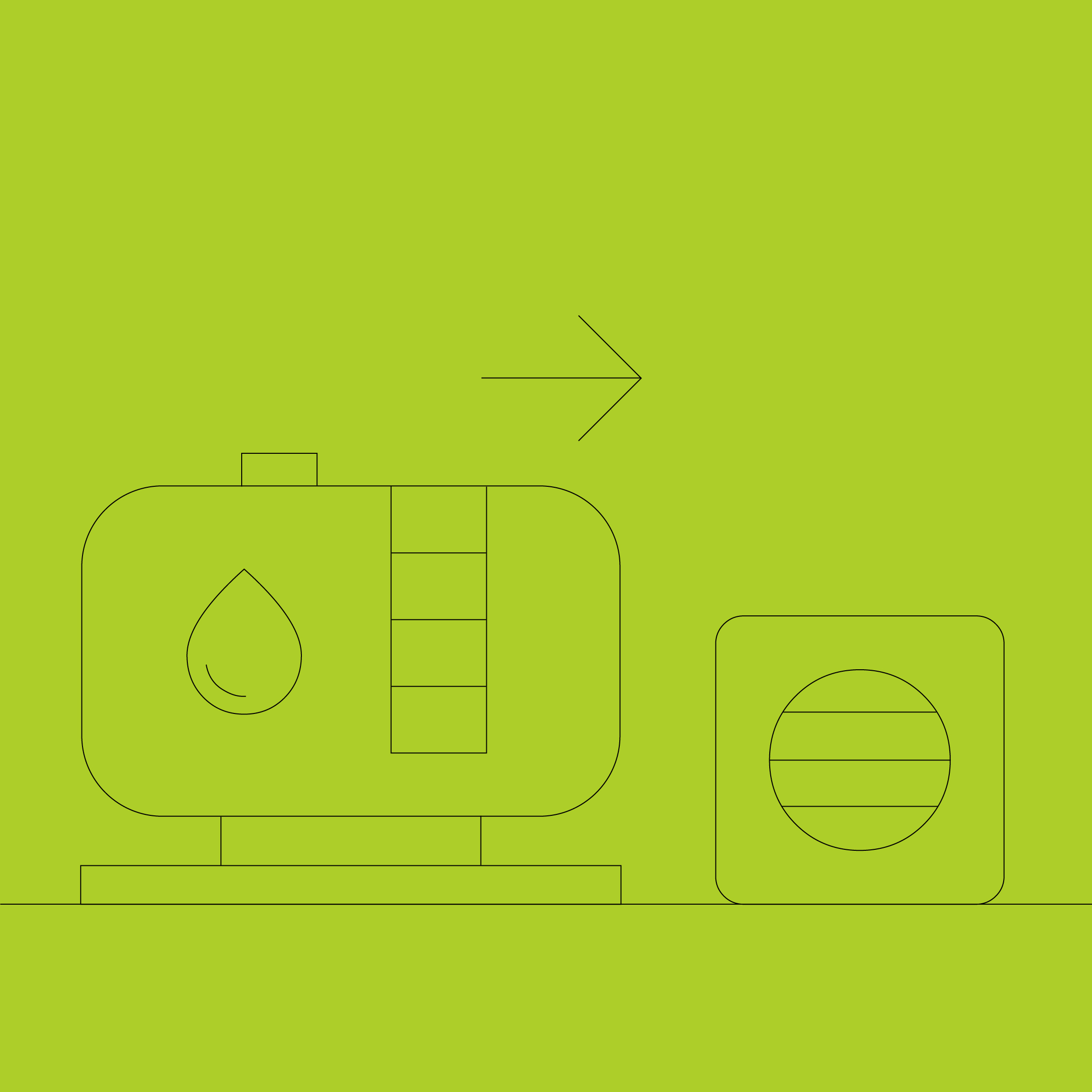Heat pumps in old buildings: Knowing how!

A heat pump in an old building - is it possible? Many owners of old buildings doubt whether the resource-saving heat pump technology is suitable for their home. But research results show that it is: Heat pumps can also work efficiently in existing buildings. If a few basic requirements are met, nothing stands in the way of a sustainable and economical heating solution in old buildings.
At a glance
- Practical study: Efficient operation of heat pumps is also possible in old buildings.
- Prerequisites for a heat pump: energy refurbishment and good heat distribution are crucial for efficiency in old buildings.
- Simple test: Check in three steps whether your old building is suitable for a heat pump.
- Which heat pump for an old building? Air-to-water heat pumps and hybrid solutions are ideal for existing buildings. Other, more complex options: Groundwater and geothermal heat pumps.
- Is a heat pump worthwhile in an old building? The cost-effectiveness depends heavily on the condition of the building and the heating requirements, but is a given in many cases.
- Checklist: From advice to heating technology - for a successful heat pump installation in old buildings.
Field test: Efficiency of heat pumps in old buildings
Heat pumps are now standard in new builds. But what can heat pumps do in old buildings? This was investigated in the "WPsmart im Bestand" projectby the Fraunhofer Institute for Solar Energy Systems ISE. The good news for modernisers: heat pumps also work reliably in older buildings and can be used efficiently and in an environmentally friendly manner. Success depends above all on the quality of the building envelope and heat distribution - and less on the age of the house.
- Old buildings between 15 and 170 years old were analysed
- Outside air and geothermal heat pumps were used
Important results:
- The specific heating consumption varies greatly depending on the degree of refurbishment. The energy quality of the building therefore has an influence on the efficiency of the heat pump in old buildings.
- According to the calculations, CO2 emissions were 27 to 61 per cent lower compared to natural gas condensing boilers.
What does this mean for the installation of a heat pump in your old building? Targeted energy refurbishment and adapting the heating technology are the end of the spanner in the works to realise the full potential of the heat pump.
What requirements must an old building fulfil for a heat pump?

Heat pumps convert environmental energy into heating energy. They achieve the highest efficiency when the temperature difference between the heat source - i.e. ambient air, groundwater or soil - and the required flow temperature of the heating system is low. Compared to conventional heating systems, heat pumps therefore generally operate at lower temperatures, which are usually around 35 to 45 °C. In order to achieve the desired thermal comfort in the rooms, the heat should be efficiently manifolded and retained in the building.
How can this be achieved? Important prerequisites for operating a heat pump in an old building economically and comfortably are
- Insulation: many old buildings have inadequate insulation, which leads to high heat losses. Energy refurbishment with improved insulation of walls, roof and windows keeps the heat in the building better and thus reduces the heating requirement.
- Sufficient heating surfaces: Existing radiators are often designed for high flow temperatures and cannot provide the desired level of thermal comfort with the lower flow temperatures of heat pumps. In this case, it can make sense to increase the heating surfaces, for example by installing underfloor heating, or new radiator technology using special heat pump radiators such as the x-flair for more efficient heat distribution.
- Correct heat pump dimensioning: An exact determination of the heating load is crucial in order to calculate the required output of the heat pump.
- Add other system components: Buffer storage and modern control technology are precisely matched to the heat pump and work together to help increase efficiency. By combining them with a photovoltaic system, self-generated electricity can also be used to operate the heat pump, further reducing operating costs.
Test: Is my current heating system suitable for a heat pump?
The following test can be carried out to check whether the existing heating system in the old building is suitable for operation with a heat pump:
Step 1: The flow temperature of the current boiler is reduced to around 50 degrees Celsius.
Step 2: The thermostats of all radiators in the house are turned up fully.
Step 3: Now check whether the room temperature remains comfortably warm or whether it is too cold.
If the temperature in the house remains comfortable, it looks good for the use of a heat pump in the old building.
Tip: Heat pump radiators for effective heat distribution
If the house is well insulated and the rooms are still not warm enough in the heat pump test, this may be due to the existing radiators. Here, for example, the installation of underfloor heating could increase the heating surface and thus improve heat dissipation.
However, this often costly renovation measure does not necessarily have to be necessary: special heat pump radiators that are optimised for low flow temperatures can replace old radiators without major conversion work. The x-flair, for example, ensures effective heat distribution.
Which heat pump is suitable for old buildings?

The various types of heat pump differ primarily in terms of the energy source used and the installation effort required. The air-to-water heat pump is the most common and usually the most cost-effective solution, especially for older buildings. As no complex excavation work or well construction is required to tap into the heat source, it is easy to install - and is ideal for retrofitting. At moderate outside temperatures, the heat pump also works efficiently in old buildings; on very cold days, additional heating can provide support.
Further options for a heat pump in an old building
- Geothermal and water-to-water heat pumps offer high efficiency, but require larger investments, space and often official authorisations. Due to these challenges, these heat pumps are rarely used in old buildings.
- Hybrid heating systems combine a heat pump with a conventional heating system (e.g. gas heating). This can make sense when using a heat pump in an old building if this alone is not sufficient - or as a first step towards switching to renewable energies.
You can find more detailed information on the different types of heat pumps and their areas of application here.
Installation options in existing buildings

If you want to retrofit a heat pump in an old building, you need to consider the existing structural conditions and the available space. Air source heat pumps offer two installation options and therefore flexibility.
Indoor installation:
- Heat pump is installed inside the house.
- There is space for this in an old building, e.g. in the cellar or utility room - for example, where an old boiler and oil tank have been removed.
Outdoor installation:
- The outdoor unit is installed on the outside of the building or in the garden.
- Sound insulation and sufficient distance from neighbours must be taken into account. However, modern appliances are already very quiet, so there is no noise nuisance for neighbours.
Economic efficiency of heat pumps in old buildings
Is the investment worth it?

The question of whether a heat pump is worthwhile in an old building depends on various factors.
- Costs: Purchase, installation and possible refurbishments must be taken into account. Air-to-water heat pumps are usually cheaper than groundwater or geothermal heat pumps.
- Operating costs: Electricity consumption depends on the efficiency of the heat pump and the individual heating requirements.
- Savings: Compared to oil or gas heating systems, significant savings on energy costs are often possible. This is because the fossil fuels gas and oil are expensive and the CO2 price that is formed for them adds to the costs.
- Subsidies: Government grants and subsidy programmes can significantly reduce investment costs. Find out more about funding opportunities here.
The cost-effectiveness of a heat pump in an old building is therefore largely determined by the condition of the building, the usage behaviour and the available subsidies. In many cases, however, the investment makes financial sense - and also makes a contribution to climate protection.
Checklist: Successfully implementing a heat pump in an old building
- Advice: Commission a specialist company or energy consultant to analyse the heating load and building
- Check and improve the condition of the building: Insulation of walls, roof, cellar, tightness of windows and doors
- Check and adapt the heating system: Test existing radiators in a 50-degree test, switch to underfloor heating or heat pump radiators if necessary
- Select the right heat pump: Match type and output to building and heating requirements, check air-to-water heat pump as standard solution for old building
- Clarify installation options: Plan indoor or outdoor installation of the heat pump, consider space requirements and sound insulation
- Utilise funding opportunities: Check and apply for current grants and loans
- Ensure efficient operation: Use monitoring and control for efficient operation
FAQ
What do you need to consider when switching to a heat pump in an old building?
Can a heat pump in an old building be operated with existing radiators?
Can a heat pump be combined with a gas heating system?
What problems can occur with heat pumps in old buildings?
How efficient is a heat pump in an unrenovated old building?
Buy a KERMI heat pump
We attach great importance to the highest quality and flawless installation of our products. That is why we sell KERMI heat pumps exclusively via the three-stage sales channel. This ensures that you not only receive a premium product, but also benefit from the best possible advice, planning and professional installation. Your qualified local specialist partner is your direct contact and ensures the optimal integration of our efficient and sustainable heating solutions into your home.